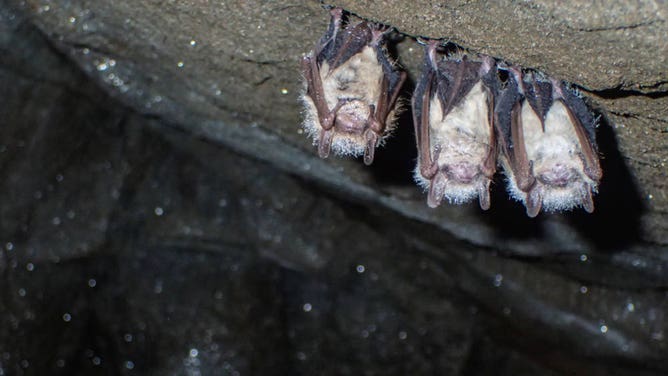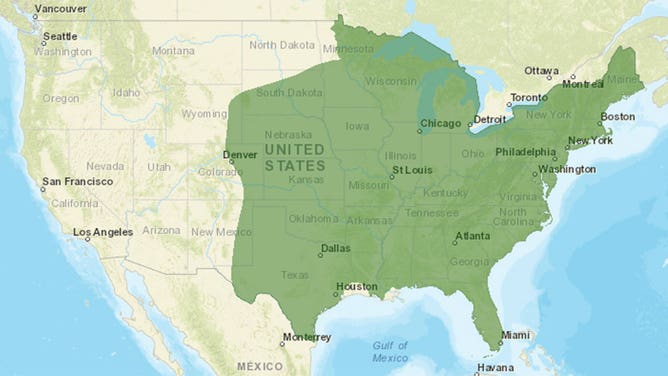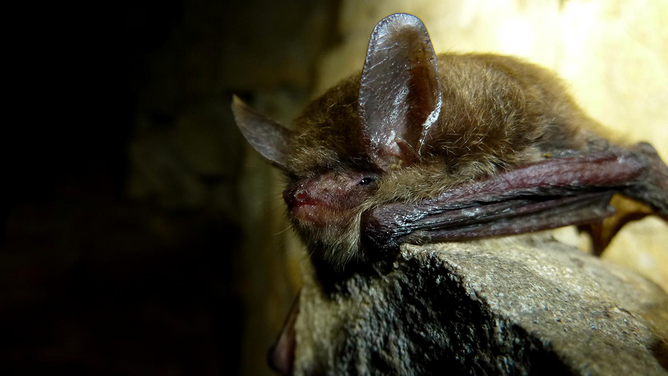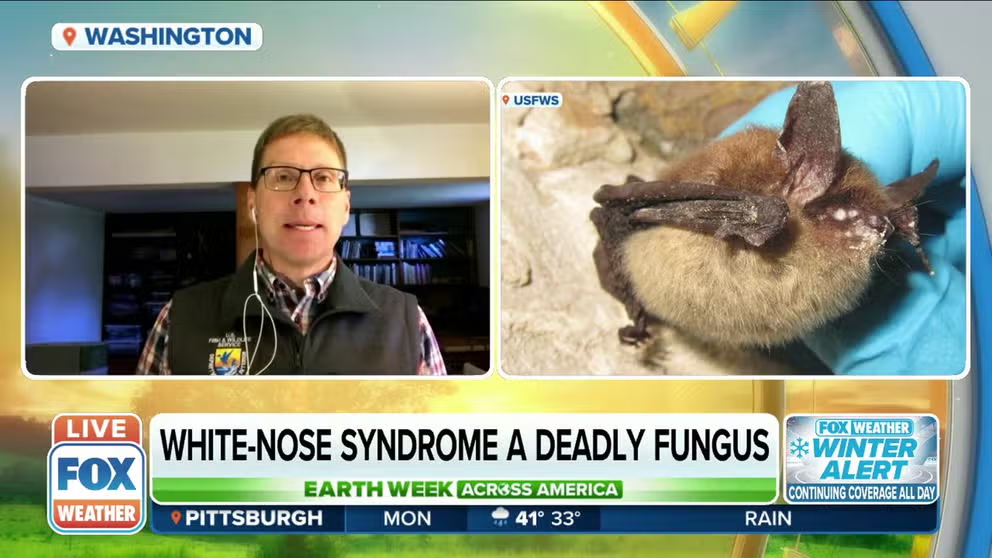Tricolored bat being pushed toward extinction by deadly fungus, officials say
The U.S. Fish and Wildlife Service has proposed adding the tricolored bat to the country’s endangered species list. It’s the second bat species in the U.S. found to be nearing extinction this year.
Bat species facing extinction due to deadly white-nose syndrome
The northern long-eared bat population, which is currently classified as threatened, faces extinction due to the wide impacts of white-nose syndrome.
For the second time this year, a species of bat found in the U.S. has been found to be nearing extinction because of a fatal fungus.
The U.S. Fish and Wildlife Service announced Tuesday it has proposed adding the tricolored bat to the country’s endangered species list.
Officials said a review found that the species has declined dramatically, and those dwindling numbers are being driven by a fungal disease called white-nose syndrome.

Tricolored bats are seen in an old mine shaft near Asheville, North Carolina in 2018.
(USFWS)
Once a colony of tricolored bats is infected, the disease causes declines of more than 90%, officials said.
According to USFWS, these bats are primarily found in 39 states, primarily east of the Rocky Mountains. Their range extends north into eastern Canada and south into Mexico and Central America. The deadly fungus is present across 59% of the bat’s range.
HOUSTON’S BRIDGE BATS TOOK A HIT DURING THE 2021 TEXAS FREEZE. HERE’S WHERE THEY STAND A YEAR LATER

This 2022 map shows the range of the tricolored bat in the U.S.
(USFWS)
"White-nose syndrome is decimating hibernating bat species like the tricolored bat at unprecedented rates," said USFWS Director Martha Williams. "Bats play such an important role in ensuring a healthy ecosystem."
Agency officials said plans will be put in place to avoid harming, harassing or killing the bats if they are added to the endangered species list.
Officials said they are also leading a national response team to research and develop strategies to minimize the impacts of the disease and recover affected bat populations.
What is white-nose syndrome?
According to a 2021 study by the U.S. Geological Survey, white-nose syndrome is caused by an invasive fungus that loves cold conditions.
It grows on the skin of cave-dwelling, hibernating bats across North America, and looks like white fuzz on the animal’s muzzle and wings, according to USFWS.
The disease was first documented in New York in 2006. It has since spread to 38 states and eight provinces in Canada.
It has been found in at least 12 species of North American bats.
Once infected, white-nose syndrome can lead to dehydration, starvation and death.
HOW SCIENTISTS LEARNED ABOUT CLIMATE CONDITIONS HUNDREDS OF YEARS AGO IS ‘BATTY’
Not the only one
Tricolored bats are the second species the flying mammals that have been found to be in jeopardy this year.
In March, USFWS proposed adding the northern long-eared bat to the endangered species list. This animal’s decline is also driven largely by white-nose syndrome, officials said.

Northern long-eared bat with visible symptoms of white-nose syndrome.
(National Parks Service/Steven Thomas)
Other threats
While the most serious threat these animals face is white-nose syndrome, there are other risks that become more impactful as their numbers dwindle.
According to USFWS, climate change is causing problems for their roosting, foraging, commuting and wintering habitats.
USFWS officials said wind energy facilities also present a threat to bats. According to Bat Conservation International, hundreds of thousands of bats are estimated to die in collisions with wind turbines in North America each year.
